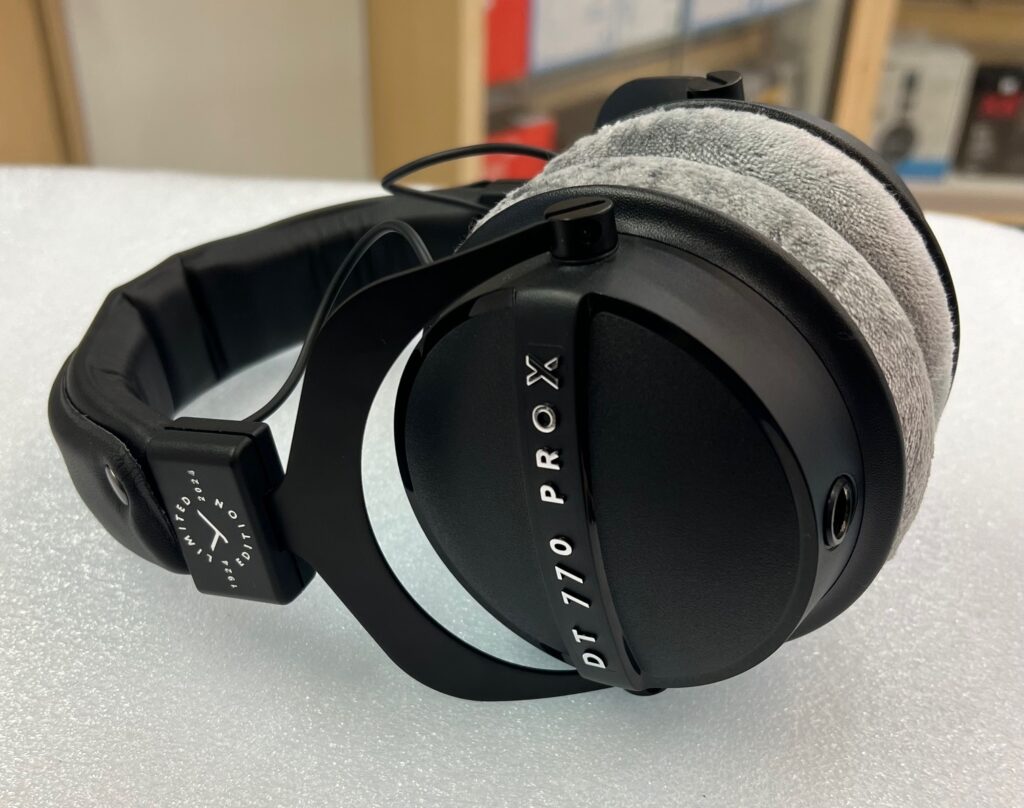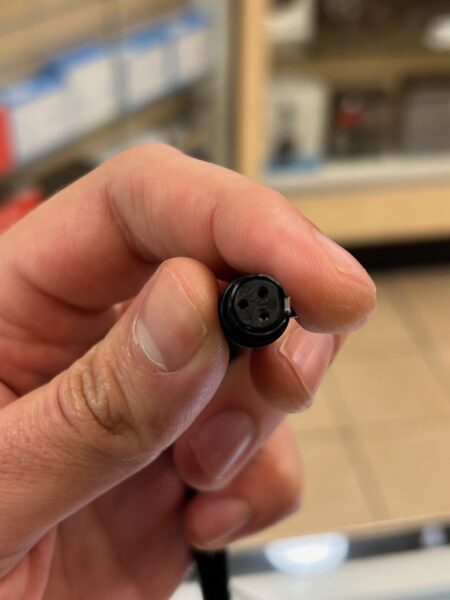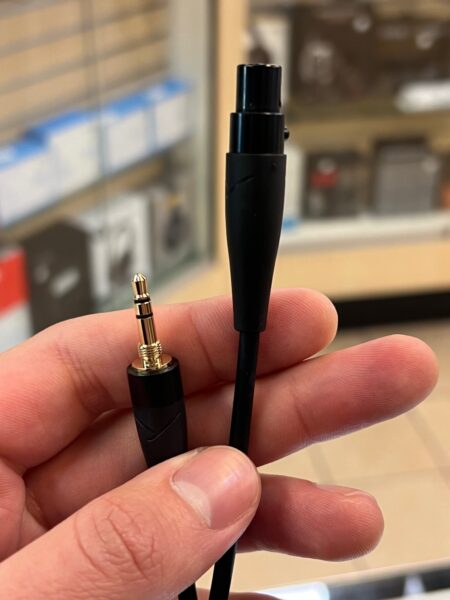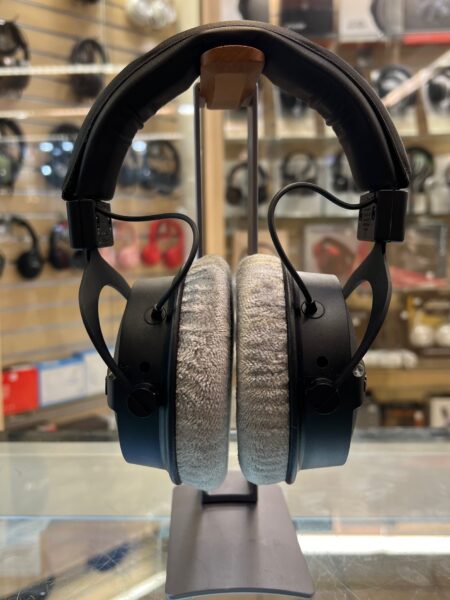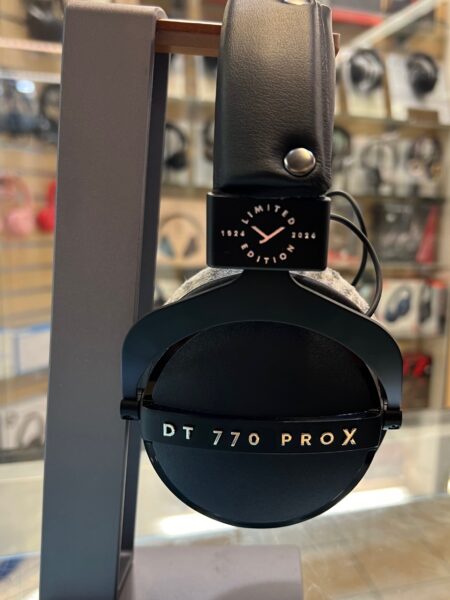It seems as if this is the year that big headphone companies reiterate their classic products with notable improvements. Beyerdynamic is following suit by returning to the DT770 Pro for their centennial celebration. The new DT770 Pro X Limited Edition has some upgrades, but a lot of people wonder if these are enough to justify the revision of a classic. Let’s find out if the DT770 Pro X LE is worth the price increase or if you should stick with the regular DT770 Pro.
Design – DT770 PRO X Review
The most apparent changes made to the DT770 Pro X LE have been in their design. Adding a detachable mini-XLR cable addresses one of the biggest weaknesses in the regular DT770. This means that users will be able to replace broken cables without worrying about soldering. Not only this, but users on a budget will have the option to upgrade cables down the line. Smaller details like beveled edges on the driver chassis and memory foam on the headband make these super comfortable. I’ve always felt that Beyerdynamic is at the head of the field in providing comfortable headphones. While recording a video for the YouTube page, I used them to record and edit for hours, and not once did I feel these were uncomfortable. At only 305g, these are incredibly lightweight and easy to carry around for recording sessions, going to work, or just listening while you’re outside.
The Stellar.45 driver borrowed from the DT700 Pro X makes an appearance in these headphones. My main criticism of the limited edition is the fact that you won’t be able to choose the resistance of your headphones. With choices between 32ohms, 80ohms, and 250ohms on the DT770 Pro, you can choose a sensitivity that will work for either listening devices or powerful outboard headphone amps. Because of the 48ohm resistance on the DT770 Pro X LE, they’re most useful with personal listening devices. People with outboard amps or desktop amps can still turn the voltage down on their gear. This is a professional reference headphone though. I would have expected them to be a little more sensitive to function well with studio equipment.
Soundstage
If Beyerdynamic excels in anything particular to me it’s creating a great soundstage on closed back headphones. The DT770 Pro X LE have a goldilocks soundstage that isn’t close but doesn’t have unnatural reverb supplementing it’s width. Like any good reference headphone, these accurately display the stereo image. Sound doesn’t bleed through the drivers when it’s meant to be localized. Wet sounding vocals still have enough width and trailing to catch my ear. I would characterize these as a medium-wide soundstage that is wide when compared to other closed-back. There is some verticality present in the sound, but the DT770 Pro X LE isn’t going to compete with the holographic qualities of $1000+ open-back headphones. For what these are, you’re not going to lack soundstage width when recording or monitoring. This is one of the best features of the DT770 Pro X LE.
Listening Impressions – DT770 PRO X Review
Lows
Lows in the DT770 Pro X Limited Edition are balanced, flat, and squeaky clean. I have a preference for neutral headphones, and these did not disappoint. The bass isn’t protruding as it does in more bass-boosted headphones. I wouldn’t recommend a pair of DT770 Pro X LE for somebody who’s looking for a bass-heavy sound, but I don’t think Beyerdynamic was going for that in their tuning. The lows are presented accurately with very little distortion (T.H.D. @ 500 Hz < 0.05 %).
Songs like “Weak” by SWV were balanced and warm in their low frequencies, adding just enough presence to make lower-voiced instruments pop. Bass forward mixes like “Black Wisdom, White Witch” by Violetshaped didn’t have much thudding sub-bass until I turned up the voltage. Even at uncomfortable listening volumes, the lows didn’t distort. Bass is there for those who want more, but it isn’t protruding enough to be offensive. Those using headphones to mix want sounds to be accurately depicted to know which parts to EQ or fade up and down.
If you like the DT770 Pro, you will feel comfortable with the amount of bass present in the DT770 Pro X Limited Edition. Unlike the voicing of the DT700 Pro X, these do favor highs and lows in their sound signature. With that in mind, I found that the 250ohm version of the DT770 had more thud when listening back to back on the Astell & Kern SP3000T. In turn, I think that a lot of users may want more lows in the mix when listening to music. These aren’t ‘basshead’ headphones and users who like lows will want to attenuate their devices to boost bass. I personally loved the bass signature because of how flat it was. That being said, I don’t think a little more lows in the tuning would hurt these headphones.
Mids
When listening to the DT770 Pro X LE, my takeaway was that the mids have the most character and tuning. There’s a dip in the low mids between 500Hz and 1kHz which keeps the cleanliness of the sound. My ears heard a slight drop in low male voices when compared to higher-register voices. I liked this for EDM and rock music which can be cluttered in this range. Yet Johnny Cash’s “You Are My Sunshine” had a haunting emptiness which felt a bit lacking when compared to Elizabeth Mitchell’s version of the same folk song. At the same time, this dip lends itself very well to saturated sounds. Distortion adds harmonics throughout the frequency range which easily overtakes a mix. At the same time, fans of folk and bluegrass may want more from the low mids, and it really depends on your preference if you’d like this quality or not.
Furthermore, there’s a bump in the higher mid frequencies, giving you a brighter than neutral quality. I’m not a big fan of bright sound signatures, and I wouldn’t say this is a bright sound. There’s enough upper-mid and treble to give sounds a shape, without bringing too much air into the mix. Songs like “360” by CharlieXCX had a bubble-gum sweetness in the vocals that were shiny and abundant. When juxtaposed to the lower pitched synths, her voice was clear. Overall I enjoyed the midrange tweaks that are present in the Limited Edition. I believe they’d do a fantastic job in a mixing application. Listening to music on the other hand is a highly subjective process. Although I thought the midrange sounded great to my ears on the music I like listening to, listeners of folk, vocal jazz and bluegrass music may want to expand their shortlist to other options.
Treble
You are definitely able to hear a natural climb from the high-mid range into the presence range of these headphones. It’s gradual rise means that there’s a little more added brightness than neutral. A frequency spectrum of 5Hz-40kHz gives listeners the discerning brilliance they may be looking for in an unoffensively neutral package. Songs don’t sound airy or sibilant, while elements in music like feedback or crash cymbals accurately wash over the mix in manageable quantities. The Stellar.45 driver allows a lot of definition from sounds that are generally found in the high-mids and low-treble ranges without sacrificing for transparency. Highs are clear in this headphone and simply put, were my favorite area of the frequency response. There’s enough bite to satisfy most listeners, while giving this range a non-fatiguing quality. Although I’m sensitive to highs, the slight bump sounded fantastic to my ears even after hours of use.
Summary
At only $199, these headphones pack a studio quality sound without breaking the bank. Notable upgrades like memory foam headband and a detachable cable make these much more versatile than their previous iterations. Some criticisms like flat bass response and lack of resistance options mean that users with niche gear or bass preferences may not totally love these headphones. At the same time, I’m having a difficult time thinking of better sounding in this price range. Their low distortion and clean highs make them an excellent studio tool. If you like DT770s and are in the market for another pair, please act fast before the limited edition sells out.

